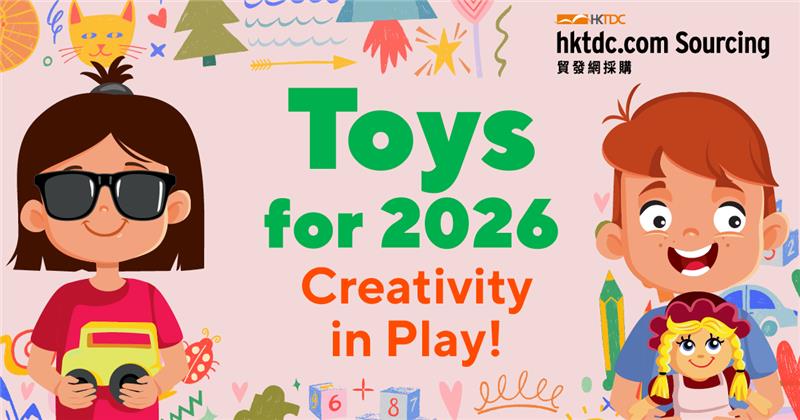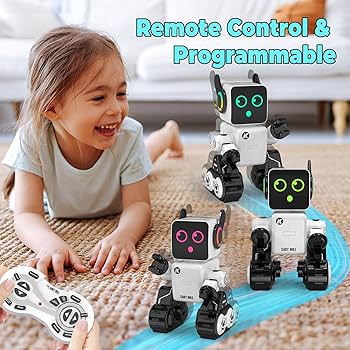
AR Toy News: The Ultimate Guide to How Augmented Reality is Revolutionizing Play
The Digital Ghost in the Machine: How Augmented Reality is Reshaping the Toybox
For generations, the playroom has been a physical space defined by tangible objects—wooden blocks, plastic figures, and plush companions. But a quiet revolution is underway, one that blurs the lines between the physical and digital worlds. This transformation is driven by Augmented Reality (AR), a technology that overlays computer-generated images, sounds, and information onto the real world. The latest AR Toy News isn’t just about a new gadget; it’s about the dawn of “phygital” play, where a simple toy becomes a portal to an interactive, digital adventure. This isn’t science fiction; it’s the new reality of play, where a child’s imagination is augmented by technology, creating experiences that are more immersive, educational, and engaging than ever before.
This comprehensive article delves deep into the burgeoning world of AR toys. We will explore the technological underpinnings that bring these experiences to life, analyze their profound impact on education and child development, and provide a practical guide for parents, educators, and developers navigating this exciting frontier. From the latest AI Toy Innovation News to critical discussions on AI Toy Safety News, we will uncover how this fusion of atoms and bits is creating the next generation of play.
Section 1: The Rise of Augmented Reality in Play: A New Paradigm
What was once a niche technology confined to research labs and industrial applications has exploded into the consumer mainstream, largely thanks to the smartphone in your pocket. The widespread success of AR applications like Pokémon GO demonstrated to the world that augmenting reality could be intuitive, fun, and immensely popular. The toy industry, always on the lookout for the next big thing, took notice. The convergence of powerful mobile processors, high-resolution cameras, and sophisticated software has created the perfect storm for AR’s integration into the world of play.
From Niche Gimmick to Mainstream Marvel
Early attempts at interactive toys often felt clunky or limited. However, modern AR toys represent a significant leap forward. The core appeal lies in their ability to enhance, not replace, traditional play. A physical LEGO set is still a creative building experience, but with AR, it becomes the stage for a ghost-hunting adventure. A coloring book page, when viewed through a tablet, can have its characters leap off the page in 3D, fully animated. This shift from passive viewing to active interaction is a key driver behind the latest AR Toy Trends News, moving the technology from a simple gimmick to a core feature that adds substantial value and replayability.
Key Market Drivers and Trends
Several factors are fueling the growth of the AR toy market. First is the ubiquity of smart devices, which serve as the window into these augmented worlds. Second is a growing demand from parents for toys that are both entertaining and educational. Many AR experiences are rooted in STEM Toy News, offering intuitive ways to teach coding, science, and problem-solving. Furthermore, the integration of artificial intelligence is making these toys smarter. An AI Companion Toy News report might detail an AR pet that not only appears in your room but also learns and responds to your interactions, creating a more personalized and emotionally resonant experience. This trend is creating a vibrant AI Toy Marketplace News landscape, with startups and established brands alike investing heavily in this space.
Pioneering Examples in the AR Toy Space
To understand the impact, consider these real-world examples:

- LEGO Hidden Side (and now VIDIYO): These sets are classic Robot Building Block News with a twist. After building a physical model, kids use a dedicated app to scan it, revealing a hidden digital world teeming with ghosts to catch or music videos to create. It masterfully blends physical construction with digital gameplay.
- Osmo: A brilliant example of AI Learning Toy News, Osmo uses a reflective AI system that attaches to an iPad’s camera, allowing it to “see” and react to physical game pieces placed in front of the screen. It teaches everything from coding (Coding Awbie) to drawing and basic physics.
- Shifu Orboot: This is an interactive globe with no names or borders. When children scan a region with a smart device, the app brings that area to life with 3D models of animals, landmarks, and cultural facts, turning geography into a captivating journey of discovery. This is a prime example of a modern AI Science Toy News product.
Section 2: The Technology Behind the Magic: A Technical Breakdown
The seamless magic of an AR toy is the result of a sophisticated interplay between hardware and software. Understanding these core components reveals how developers create such immersive experiences and what the future holds for AI Toy Research News. At its heart, every AR toy system relies on three pillars: the physical object, a smart device, and the AR application.
Core Components of an AR Toy System
The physical toy is more than just a prop; it’s the anchor for the digital experience. It might contain specific visual cues known as markers, or it could be designed with unique shapes and colors that an algorithm can recognize. The smart device (a phone or tablet) provides the essential hardware: the camera to see the world, the powerful CPU and GPU to process the data and render 3D graphics in real-time, and sensors like the accelerometer and gyroscope to understand orientation and movement. Finally, the AR application is the brain. It runs the computer vision algorithms that recognize the toy and the environment, and it renders the digital overlay, perfectly synchronizing it with the camera’s view. This seamless AI Toy App Integration News is critical for a convincing experience.
Marker-Based vs. Markerless AR: Two Paths to Augmentation
There are two primary methods developers use to anchor digital content in the real world:
- Marker-Based AR: This is the most common approach for many AR toys. The application is programmed to recognize a specific, pre-defined image, like a QR code, a picture on a card, or a unique symbol printed on a toy. When the camera sees this marker, it instantly knows where to place the 3D object. This method is computationally less intensive and highly reliable for specific, targeted interactions, making it perfect for AR board games or interactive storybooks.
- Markerless AR (SLAM): More advanced experiences use a technology called Simultaneous Localization and Mapping (SLAM). Instead of looking for a specific marker, the SLAM algorithm analyzes the live camera feed to identify feature points in the environment, like the corners of a table or the texture of a floor. It builds a 3D map of the room in real-time, allowing the user to place and interact with virtual objects anywhere in the space with a stunning degree of realism. This is the technology that allows a piece of Robot Toy News to feature a virtual robot that can realistically navigate your living room floor.
The Growing Role of AI and Machine Learning
Artificial intelligence is the secret sauce that elevates a good AR experience into a great one. Machine learning models are trained to recognize not just markers, but a wide array of objects, gestures, and even facial expressions. This opens up new avenues for interaction. For example, a Voice-Enabled Toy News feature could describe an AR character that responds to spoken commands. An AI Drawing Toy News app might turn a child’s 2D doodle into a 3D animated character. AI also enables adaptive gameplay, where the AR experience can adjust its difficulty or content based on the child’s performance, creating a truly personalized learning path.
Section 3: More Than a Game: The Educational and Developmental Frontier
While the entertainment value of AR toys is obvious, their potential to revolutionize education and childhood development is even more profound. By bridging the gap between abstract concepts and tangible interaction, AR provides a powerful tool for learning. This is a major focus of current AI Toy Startup News and a key reason for the technology’s rapid adoption in homes and classrooms.
Revolutionizing STEM and Coding Education
Complex subjects in Science, Technology, Engineering, and Math (STEM) often involve concepts that are difficult to visualize. AR can make the invisible visible. A chapter on astronomy can be supplemented by an AR app that projects a detailed, interactive model of the solar system onto the classroom floor. A Programmable Toy News item might showcase a physical robot whose programmed logic is visualized through AR, showing the intended path and decision-making process as glowing lines in the real world. This kind of interactive visualization helps demystify complex topics, making Coding Toy News and Educational Robot News particularly exciting fields for AR integration.

Fostering Creativity and Storytelling
AR toys are powerful catalysts for imagination. They provide a digital canvas on which children can build and direct their own narratives. A child might build a castle with physical blocks (a form of Smart Construction Toy News), then use an AR app to populate it with knights, dragons, and magical effects. This transforms them from passive consumers of stories into active creators. The latest AI Storytelling Toy News highlights systems where an Interactive Doll News feature allows a child’s interaction with a physical doll to trigger unique AR story arcs, complete with animated characters and dialogue, effectively co-creating a story with the technology.
Developing Spatial Reasoning and Problem-Solving
Interacting with 3D digital objects within a 3D physical space is a fantastic workout for the brain’s spatial reasoning centers. An AI Puzzle & Board Toy News game might require a player to physically manipulate puzzle pieces while an AR overlay reveals hidden clues or presents new challenges that can only be solved by understanding the relationship between the physical and digital elements. This process of observing, predicting, and acting within a mixed-reality environment hones critical problem-solving skills and enhances a child’s ability to think in three dimensions, a crucial skill in many scientific and artistic fields.
Section 4: Navigating the AR Toy Landscape: Best Practices and Pitfalls
As the AR toy market expands, both consumers and developers face a new set of challenges and considerations. Making informed choices is key to ensuring these toys are beneficial, safe, and truly innovative rather than just technologically flashy. Following the latest AI Toy Reviews News is a good start, but a deeper understanding is necessary.

For Parents and Educators: Making an Informed Choice
When selecting an AR toy, it’s important to look beyond the “wow” factor. Here are some practical tips:
- Check Compatibility: Ensure the required app works with your specific smartphone or tablet model and operating system.
- Prioritize Play Value: The best AR toys are fun even without the screen. The physical toy should have standalone value, with the AR component acting as a powerful enhancement.
- Evaluate the Content: Look for toys that offer genuine educational or creative value. Be wary of experiences that are heavily reliant on in-app purchases or are light on substantive content.
- Consider Safety and Privacy: Always review the app’s privacy policy. Reputable brands will be transparent about data collection. This is a critical aspect of AI Toy Ethics News that parents must consider.
For Developers and Toy Brands: Keys to Success
For those creating the next wave of AR toys, success hinges on more than just good technology. The latest AI Toy Brand News shows that the most successful products share common traits:
- Focus on a Seamless UX: The transition between physical play and the AR experience must be effortless. A clunky or slow app will quickly lead to frustration and abandonment.
- Enhance, Don’t Dictate: The AR should empower the child’s imagination, not constrain it. The experience should open up possibilities rather than forcing the user down a single, rigid path.
- Build for Longevity: The most successful platforms provide ongoing value through regular AI Toy Updates News, introducing new content, features, and play patterns to keep the experience fresh.
- Prioritize Safety by Design: Build with privacy and safety as a core principle. This includes secure data handling and creating a positive, age-appropriate digital environment, a cornerstone of responsible AI Toy Design News.
Conclusion: The Augmented Future of Play is Here
Augmented Reality toys are far more than a passing fad; they represent a fundamental evolution in how children play, learn, and create. By masterfully blending the tactile satisfaction of physical toys with the limitless potential of digital worlds, they offer experiences that are uniquely engaging and educationally potent. From AI Plushie Companion News detailing cuddly friends who come to life, to AI Vehicle Toy News about race cars that leave virtual tracks on your floor, the applications are as boundless as the imagination itself.
As the technology continues to mature, we can anticipate even more sophisticated integrations. The latest AI Toy Future Concepts News points towards AR experiences that require no phone at all, viewed through lightweight smart glasses, and AI companions that are more adaptive and emotionally intelligent. The ongoing convergence of AR, AI, and robotics promises a future where the line between a toy and a learning tool, or a plaything and a companion, becomes wonderfully and irrevocably blurred. The news is clear: the future of play is not just physical or digital—it’s both.


